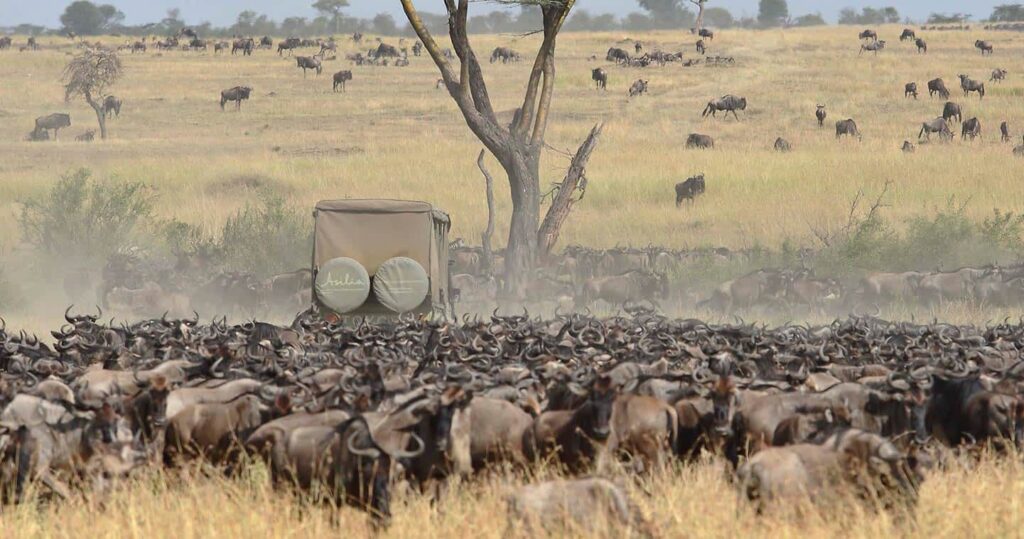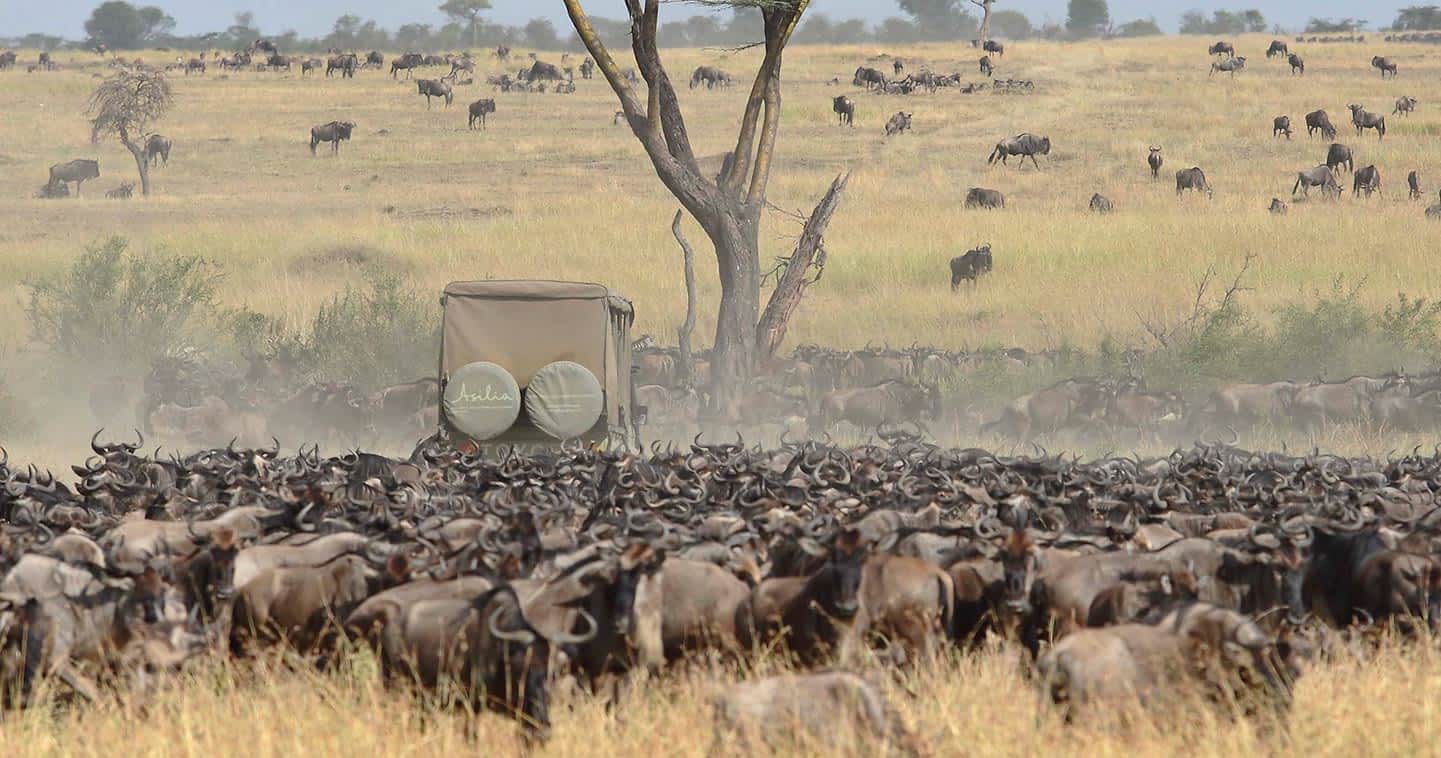
The Great Migration is one of nature’s most extraordinary spectacles, drawing thousands of visitors each year to witness the most amazing movement of wildebeest, zebras, and gazelles across the plains of Africa. This epic journey, often referred to as the “Greatest Show on Earth,” is a testament to the raw power and resilience of wildlife.
To fully appreciate this magnificent event, it’s essential to understand the two critical time frames of the migration. The Calving Season: December to March The migration’s first significant phase occurs from December through March. During these months, the herds are in the southern Serengeti, where they focus on calving.
This period is crucial for the wildebeest population, as the grassy plains of the Serengeti provide ample nutrition for the pregnant females. December to March Highlights: Calving Season: The southern Serengeti transforms into a bustling nursery. Female wildebeest give birth to their calves in the safety of the short grass plains, which are rich in nutrients. This ensures that the newborns receive the best possible start in life. Nurturing and Growth: The calves are born in rapid succession, leading to a dramatic increase in population density. The spectacle of thousands of newborn calves taking their first steps on the plains is a sight to behold, making this period one of the most dynamic and visually captivating times of the migration.
The Migration North: June to October The second significant phase of the Great Migration spans from June through October, when the herds make their way northward from the Serengeti to the Maasai Mara in Kenya. This journey is driven by the search for fresh grazing grounds and the need to find water sources as the dry season sets in. June to October Highlights: River Crossings: One of the most dramatic and photographed events during this period is the river crossings.
The wildebeest and their companions must navigate the treacherous waters of the Mara River, facing potential crocodile attacks and the sheer physical challenge of the crossing. Predator Encounters: As the herds move north, they face increased encounters with predators like lions and cheetahs. The vast expanse of the Maasai Mara offers both opportunities and dangers for the migrating herds. Wilderness Travel’s Great Migration Safari during this period provides an exceptional vantage point to witness these iconic river crossings and predator interactions.
The Maasai Mara’s rich landscape and diverse wildlife ensure that each safari experience is unique and unforgettable. The Great Migration is a testament to the resilience and determination of Africa’s wildlife. Whether you are captivated by the calving season’s new beginnings or the dramatic river crossings of the migration north, each phase offers its own unique and compelling view of nature’s beauty. Contact us to find the best safari spots and perfect accommodation for a magical holiday.

